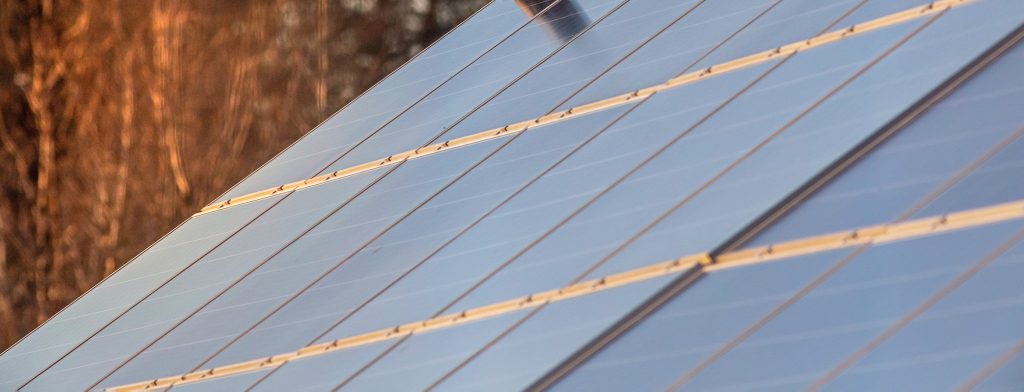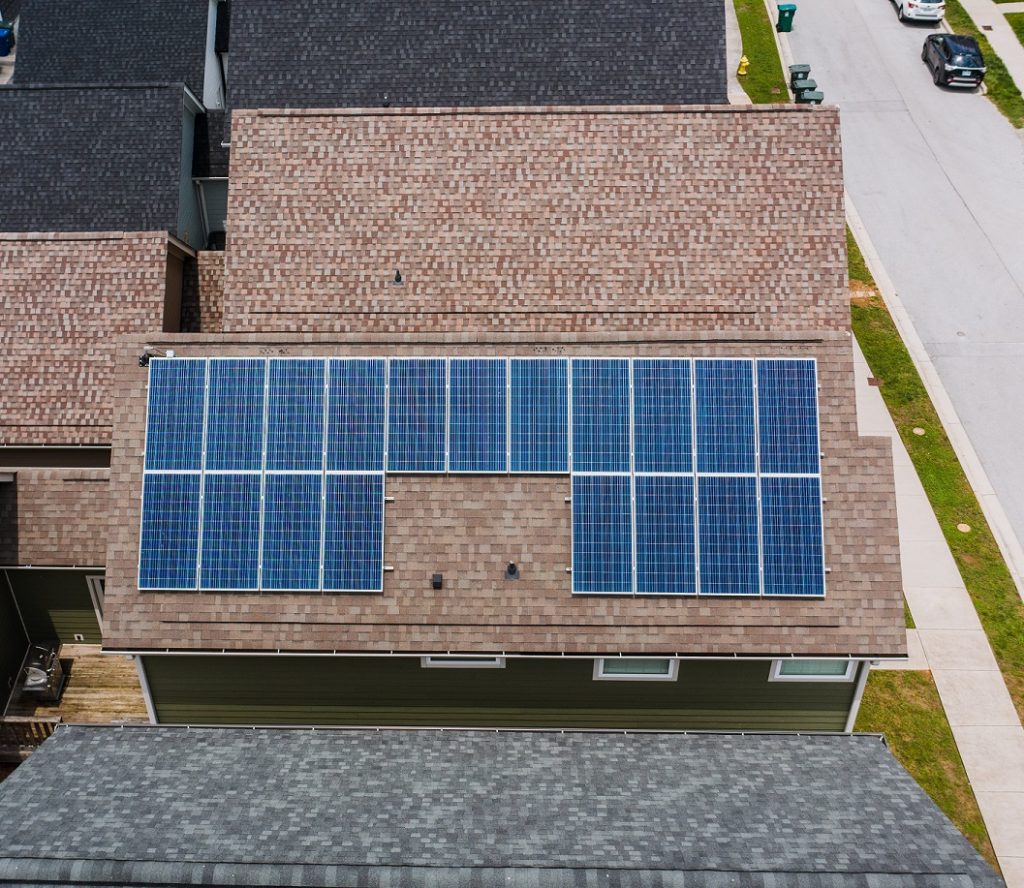
An Intro to Solar Easements
Solar electricity changes real estate. When a homeowner adopts solar energy, other homeowners are impacted. Solar systems create aesthetic changes. Because of community resistance, they also create a need for solar access rights.
Does any of this affect the title or property value? It can — in the form of a solar easement for unobstructed sunlight.
In this article, we take a look at how basking in the rays can affect homes, communities, and real estate titles.
Shedding Light on the HOA’s Role
Homeowners’ associations are on the rise today. They encompass developments of free-standing houses, and properties with multi-unit buildings and shared common areas. Solar panels change the look and character of homes, so some HOA boards won’t permit them. HOAs have long wielded their power to keep everybody on the same page by enforcing deed restrictions. For HOA boards, moreover, adjusting to innovations is a challenge. For one thing, an association that accommodates solar roof systems must also decide how to allocate roof repair and maintenance costs.
But HOAs are being pressed to evolve with the technology. In recent years, a number of states (particularly sunny ones like Texas, California, Florida, and Arizona) have enacted laws to protect a homeowner’s right to solar energy within an HOA. These solar access rights prevent HOAs from forbidding solar panel installations.
But the HOAs can still place “reasonable” restrictions on placement, size, design, and installation methods. The homeowner may need to submit design plans to the HOA board or its architectural review body to green-light the installation. Solar companies take active roles in helping homeowners show design plans and explain them to the homeowners’ associations.
Nevertheless, an HOA’s architectural review board might require solar panels to be placed where they cannot be seen from the front of the home. Depending on the orientation of the roof, such restrictions can mean an installation will not effectively collect the sun’s energy.
There are alternatives to panels — such as solar tiles or “skins” — that blend in with a roof. But selecting these will add several thousand dollars to the cost of going solar.
Negotiating Solar Panel Placement With an HOA
Buyers should review an association’s covenants and restrictions carefully before closing on a unit. Especially units share common roofs, restrictions are common.
If there is no mention of solar installations, buyers should affirmatively ask about the HOA’s policy. Does anyone in the development have solar panels? If not, it’s best not to assume anything. Speak with the board chair and find out if there will be restrictions on your plans.
What if solar is allowed, but your design plans are rejected — for example, because of the visibility issue discussed above? This will mean negotiating with an HOA board. Because solar energy is a community issue, point out to the board that all roofs that face the sun will be subject to the same restrictions. That is, the restriction deprives all of these owners of solar options, and presents its own property-value issue. What if these owners want to sell, and their buyers would prefer homes with solar power or the option to have it?
If the development’s state has solar access rights, the unit owners are in a stronger position. But they still must abide by “reasonable” limitations imposed by a board. The only way to address these limitations is to go through the HOA’s rule changing procedure. A rule change could be possible if multiple owners want it. Homeowners who believe the board is unduly restricting their property rights are advised to consult with a local law firm that works with laws affecting HOAs.
The Rise of the Solar Easement

By default, an HOA can keep its residents from adopting home solar systems. But increasingly, states are recognizing private (commercial or residential) solar easements. These documents represent individual owners’ voluntary agreements to let adjacent owners keep access to sufficient sunlight. This could involve keeping trees trimmed, or not building obstructions to sunlight.
A solar easement under Montana’s law “is subject to the same conveyancing and instrument recording requirements as other easements” on real estate. The document must specify the degrees of vertical and horizontal angles of the easement, and the terms under which the easement is granted and will end.
In Kansas, solar easements must follow similar rules. They must be recorded with the register of deeds of the property’s county.
In Minnesota, a solar easement means a conveyable right, whether formulated as a “restriction, easement, covenant, or condition, in any deed, will, or other instrument” created by or for a real estate owner “for the purpose of ensuring adequate exposure of a solar energy system…” It must be written, executed, and recorded in the home’s county. It runs with the land until it terminates upon the conditions in the document. It must include the relevant property descriptions, the degrees of the vertical and horizontal angles measured from the solar energy system, the relevant times of day unobstructed direct sunlight is needed, compensation by the benefited owner for maintenance costs, and other terms or conditions. Depreciation is counted for property tax purposes.
In Iowa, solar access easements may be “obtained voluntarily or pursuant to the order of a solar access regulatory board” and are “subject to the same recording and conveyance requirements as other easements.” They need to contain the legal description of the properties involved, the degrees of vertical and horizontal angles of the solar easement, and the starting points for measurement. They may specify how structures and trees are limited, and conditions under which the easement ends. Provisions for compensation in the event of a breach, or for maintaining the easement, may also be stated.
These are just a few examples of states with solar easement provisions.
Creating a Solar Easement Document
The government of Tennessee provides a sample instrument titled Solar Easement Agreement. (See Tennessee’s full sample solar easement here.) The agreeing owners fill in the fields with the following information:
- The effective date of the agreement between the named grantor (party offering to respect the sunlight needs) and the grantee (party with the solar panels).
- Their addresses, with attachments (“Exhibits”) showing the property descriptions and a legal description of the space occupied by the solar energy system.
- A description of the solar energy system, including dimensions and orientation, and its intended energy use.
- Vertical and horizontal angles at which the solar easement extends over the grantor’s property, at which times and seasons. Drawings can be attached as additional exhibits.
- A description of anything that might significantly block the sunlight and need removal, trimming, or other modification. Drawings can be attached as additional exhibits.
- Key exceptions and restrictions, and the amount to be paid from owner to owner, as well as the amount and timing of compensatory damages for a breach.
- The terms of the easement going into effect, and how it would terminate.
Before signing and dating the agreement, the parties state their understanding that the instrument is the entire agreement, and can only be modified with a new formal agreement. The solar easement is recorded with the county Office of the Register of Deeds.
Each state will have its own legal customs and requirements. Where solar access is available, parties are advised to check with the Office of the Register of Deeds in advance regarding what forms, formatting, and procedures to follow for recording purposes.
At the End of the Day…
A unit owner who sells a home with a solar system needs to know what rules apply. The owner may need to dismantle the system and pay for roof repairs if the buyer prefers not to keep the panels.
Increasingly, buyers do want renewable energy. They’re aware, too, that renewable energy can lower their electricity costs in the long run. Rebates, credits for unused energy, and other incentives also exist, and many homeowners want to take advantage of these. Boards can treat solar access as a valuable asset, and create appropriate and clear policies, mindful of current state laws.
Please note: Because each state (and each association) has a unique blend of laws, restrictions, and customs, this article is no substitute for legal advice or research. Laws at the intersection of energy and real estate are rapidly evolving. Local electricity providers have options for customers who want renewable energy but cannot install their own systems.
Supporting References
Montana Code, Solar Easements § 70-17-301, 302.
Kansas Code, Solar Easements § 58-3801, 3802.
Minnesota Statutes, Solar or Wind Easements §500.25-30.
Iowa Code, Solar Access Easements §564A.7, citing 81 Acts, ch. 184, §9.
Tennessee Code, Easement to Run With the Land, § 66-9-205.
Kim Brown for Condo Control Central: HOAs and Solar Panels (Apr. 8, 2022).
Photo credits: Erik Karits and Kelly L, via Pexels.
